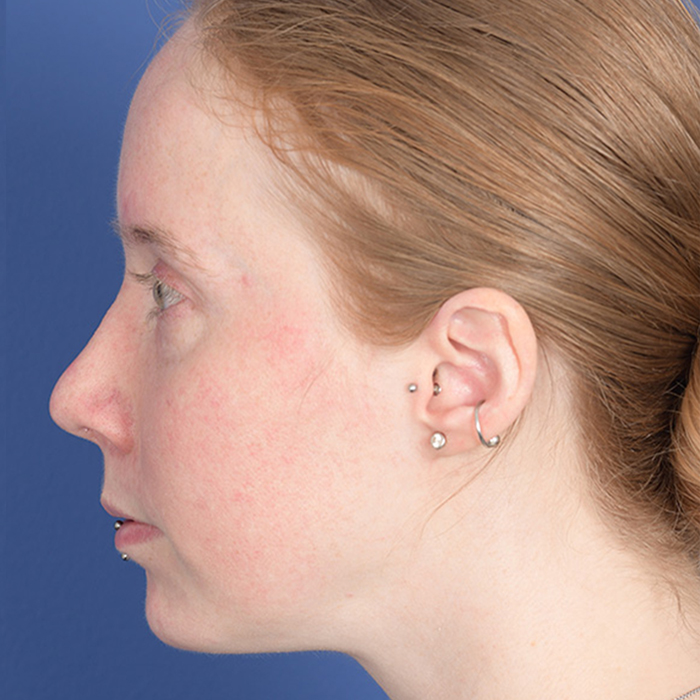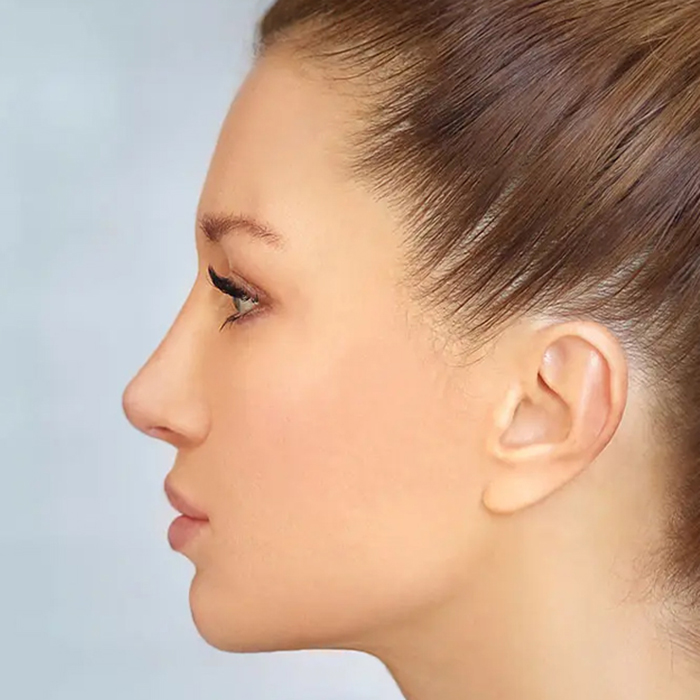Mentoplasty
Mentoplasty is an aesthetic surgery that restructuring of the jaw to make it compatible with the face. This surgery improves the appearance of the chin and the overall proportions of the face. There are common consensus facial features that can make an individual look over or under attractive. All the structures on the face should be harmonious and balanced within themselves. In addition to the fact that the relations, angles and distances of these structures with each other are different in each person, "ideal values" can be calculated for each person. The ideal jaw position should be 2-3 mm behind an imaginary vertical line drawn downward from the base of the nose. A deviation of more than 2-3 mm is considered a weak jaw, and vice versa, a strong jaw. For women, the ideal jaw position may be slightly behind this ideal place, which creates a more desirable aesthetic appearance. For men, a strong jawline that gives a masculine look is preferred.
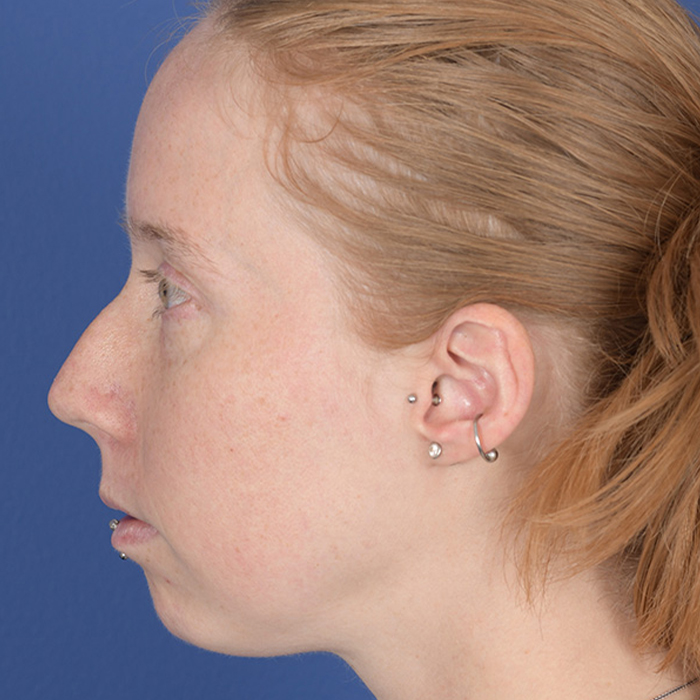
Before
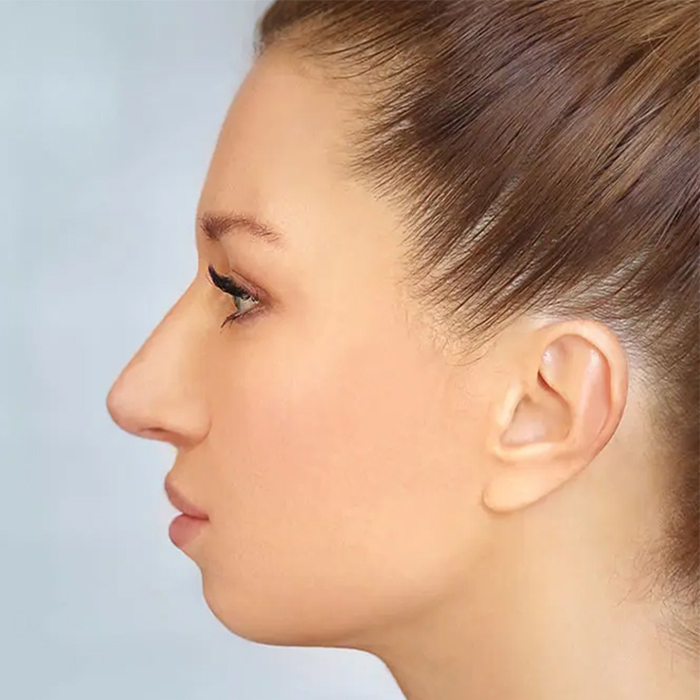
Before
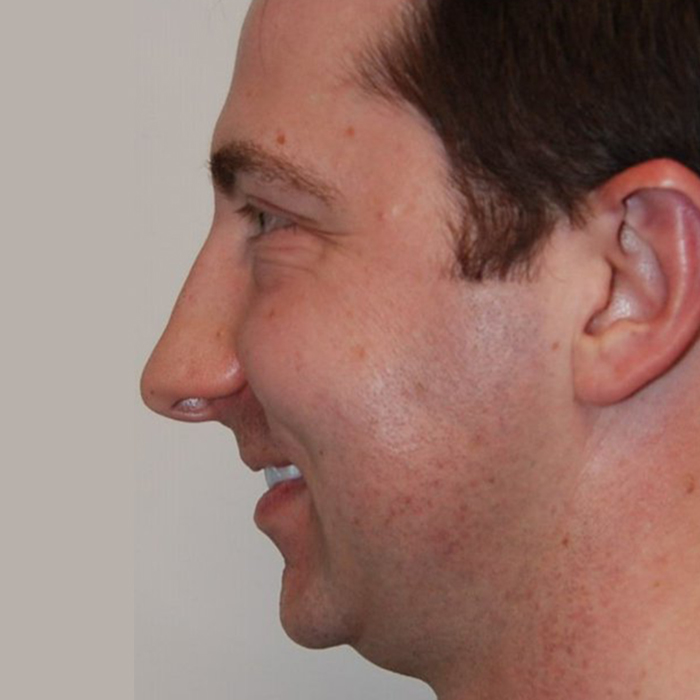
Before
General Information on The Procedure
Mentoplasty can be performed by placing an implant in the patient to correct a weak jaw, enlarging a small or pulled chin, or by moving and advancing a part of the patient's own jaw.In patients with very small jaws, the body's own tissue can be used to add to the jaw, and for this, its own bone can be used which usually from the hip. Mentoplasty can also be done by removing a piece of bone to shrink an excessively prominent jaw that distorts the general appearance.
Preop Preparation
Your surgeon will make your face analysis and make suggestions to create realistic expectations about the results of the mentoplasty surgery. The planned surgery will be explained in detail without leaving any questions in your mind. Your surgeon may recommend additional facial surgeries based on his/her observations and needs. When the surgery is decided, your comprehensive medical history will be taken, and you will be asked about your previous surgeries. Laboratory tests may be ordered according to your general health status. X-ray analyzes may be requested to determine the amount of chin enlargement or reduction to be made to provide a better view before the surgery, and to make changes in height and position. The surgeon should be informed about the use of any medication that affects bleeding (such as coumadin or warfarin). Aspirin, aspirin-containing drugs, ibuprofen or other non-steroidal anti-inflammatory drugs, ginko biloba extracts, vitamin E preparations should be avoided in the weeks before surgery. You can use your daily medications if your surgeon approves. Unless otherwise provided, nothing should be eaten or drunk from midnight before the surgery. You should brush your teeth before the operation.
Operation
Mentoplasty can be performed under local anesthesia with or without sedation, or under general anesthesia. The operation can be performed on the day without requiring hospitalization. Depending on the process to be operated, it can take between 30 minutes and 3 hours. If an implant is needed for the chin, the surgeon starts with a small incision under the chin or through the mouth. Your doctor will be informed about the planned incision site before surgery. The implant is placed in front of the chin, deep into the soft tissues. The patient's anatomy and his own conditions determine the implant requirement. There are different types of implants to shape the chin as required. Gortex and silicone are the most commonly used implants, as they have been proven to provide excellent shaping in many studies. Screws or plates are generally not required for mentoplasty. It is placed under the membrane surrounding the jawbone and fixed with stitches. The aim is to reduce the projection of the chin, shaving the chin a little through the same incision and bring it to the desired shape.
Postop Things to Do
Pain that may occur after surgery is controlled with medication. The feeling of tension in the jaw seen in the patients decreases within weeks. There may be edema and bruising. Edema reaches its maximum in the first postoperative week and then begins to decrease. Bandage is applied to the chin for 2 or 3 days after the operation. The stitches are removed within 5 or 7 days after the operation, or they dissolve spontaneously. Chewing may be restricted for a few days after the surgery, and it may be necessary to be fed with liquid and soft foods. 10 days after the operation, patients can return to their daily lives. Patients are advised to avoid strenuous activities in the first few weeks after surgery. In addition, face blows should be avoided for 6 weeks.
Mentoplasty can be performed by placing an implant in the patient to correct a weak jaw, enlarging a small or pulled chin, or by moving and advancing a part of the patient's own jaw.In patients with very small jaws, the body's own tissue can be used to add to the jaw, and for this, its own bone can be used which usually from the hip. Mentoplasty can also be done by removing a piece of bone to shrink an excessively prominent jaw that distorts the general appearance.
Preop Preparation
Your surgeon will make your face analysis and make suggestions to create realistic expectations about the results of the mentoplasty surgery. The planned surgery will be explained in detail without leaving any questions in your mind. Your surgeon may recommend additional facial surgeries based on his/her observations and needs. When the surgery is decided, your comprehensive medical history will be taken, and you will be asked about your previous surgeries. Laboratory tests may be ordered according to your general health status. X-ray analyzes may be requested to determine the amount of chin enlargement or reduction to be made to provide a better view before the surgery, and to make changes in height and position. The surgeon should be informed about the use of any medication that affects bleeding (such as coumadin or warfarin). Aspirin, aspirin-containing drugs, ibuprofen or other non-steroidal anti-inflammatory drugs, ginko biloba extracts, vitamin E preparations should be avoided in the weeks before surgery. You can use your daily medications if your surgeon approves. Unless otherwise provided, nothing should be eaten or drunk from midnight before the surgery. You should brush your teeth before the operation.
Operation
Mentoplasty can be performed under local anesthesia with or without sedation, or under general anesthesia. The operation can be performed on the day without requiring hospitalization. Depending on the process to be operated, it can take between 30 minutes and 3 hours. If an implant is needed for the chin, the surgeon starts with a small incision under the chin or through the mouth. Your doctor will be informed about the planned incision site before surgery. The implant is placed in front of the chin, deep into the soft tissues. The patient's anatomy and his own conditions determine the implant requirement. There are different types of implants to shape the chin as required. Gortex and silicone are the most commonly used implants, as they have been proven to provide excellent shaping in many studies. Screws or plates are generally not required for mentoplasty. It is placed under the membrane surrounding the jawbone and fixed with stitches. The aim is to reduce the projection of the chin, shaving the chin a little through the same incision and bring it to the desired shape.
Postop Things to Do
Pain that may occur after surgery is controlled with medication. The feeling of tension in the jaw seen in the patients decreases within weeks. There may be edema and bruising. Edema reaches its maximum in the first postoperative week and then begins to decrease. Bandage is applied to the chin for 2 or 3 days after the operation. The stitches are removed within 5 or 7 days after the operation, or they dissolve spontaneously. Chewing may be restricted for a few days after the surgery, and it may be necessary to be fed with liquid and soft foods. 10 days after the operation, patients can return to their daily lives. Patients are advised to avoid strenuous activities in the first few weeks after surgery. In addition, face blows should be avoided for 6 weeks.
